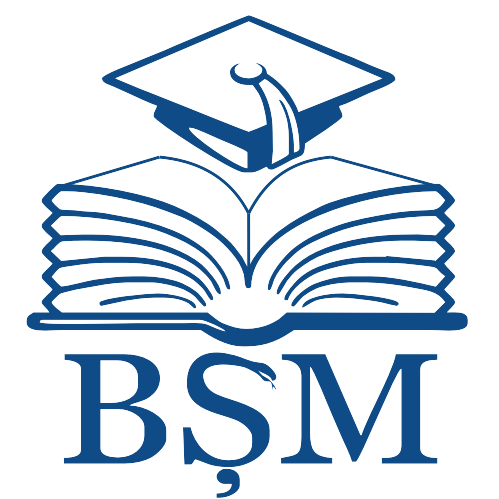|
|
- IRMS - Nicolae Testemitanu SUMPh
- 1. COLECȚIA INSTITUȚIONALĂ
- MATERIALE ALE CONFERINȚELOR ȘTIINȚIFICE
- Abordări interdisciplinare în stomatologie. Conferință națională cu participare internațională 11-12 aprilie 2025, Academia de Științe a Moldovei
- Conferința "Abordari interdisciplinare în stomatologie", Chişinău, Moldova, 11-12 aprilie 2025
Please use this identifier to cite or link to this item:
http://hdl.handle.net/20.500.12710/30906
| Title: | Reacțiile vegetative simpatice cutanate la angrenarea maxilarelor |
| Other Titles: | Sympathetic vegetative skin reactions to jaw engagement |
| Authors: | Lacusta, Victor
Fala, Valeriu
Tatarciuc, Monica Silvia
Țănculescu, Oana
Bordeniuc, Gheorghe
Cheptanaru, Olga |
| Keywords: | jaw engagement;vegetative reactions;stomatognathic system |
| Issue Date: | 2025 |
| Publisher: | Academia de Ştiinţe a Moldovei, Universitatea de Stat de Medicină şi Farmacie „Nicolae Testemiţanu“, Asociaţia stomatologilor din Republica Moldova |
| Citation: | LACUSTA, Victor; Valeriu FALA; Monica TATARCIUC; Silvia Oana ȚĂNCULESCU; Gheorghe BORDENIUC; Olga CHEPTANARU. Reacțiile vegetative simpatice cutanate la angrenarea maxilarelor = Sympathetic vegetative skin reactions to jaw engagement. In: Abordări interdisciplinare în stomatologie. Conferință națională cu participare internațională 11-12 aprilie 2025, Academia de Științe a Moldovei. Chișinău, 2025, p. 29. ISBN 978-5-857 48-140-0. |
| Abstract: | Introducere. În practica stomatologică, angrenarea maxilarelor este un fenomen frecvent întâlnit, fiind asociată cu
multiple reacții ale sistemului stomatognat și sistemice (stres psihic, reacții psiho-vegetive, etc) Prin înțelegerea acestor
reacții medicii stomatologi pot adapta strategiile de tratament asigurând o abordare cât mai eficientă pentru pacienți.
Scopul lucrării. Analiza reacțiilor vegetative simpatice cutanate la angrenarea forțată a maxilarelor, în funcție de
nivelul anxietății și de lateralitatea masticației.
Materiale și metode. Au fost investigate 30 de persoane sănătoase, de sex masculin cu vârsta cuprinsă între 20 -
40 ani. Potențialele vegetative evocate cutanate (amplituda undei simpatice A2) ca răspuns reflector la angrenarea forțată
a maxilarelor au fost înregistrate folosind complexul diagnostic Neurosoft. Anxietatea s-a apreciat aplicând testul Spielberger.
Determinarea lateralității masticației s-a realizat prin metoda vizuală (în timpul masticației, de 7 ori la fiecare
15s) și prin metoda autoaprecierii de către persoana investigată.
Rezultate. Indicele A2 variază într-un interval destul de larg (între 0,71mV și 5,03mV) comparativ cu valorile A2 normale
în condiții de confort relativ, care sunt 1,31 +/- 0, 12 mV. Răspunsul vegetativ s-a manifestat în 3 forme: 1) în 30 % cazuri
în limitele normale 1,1 – 1,5 mV (66% - anxietate era în limitele normei, 34 % - nivel sporit de anxietate; 26,6% - masticație
bilaterală); 2) 60 % cu valorile mai mari de 1,5 mV în asociere cu nivelul sporit de anxietate; 85,72 % masticație unilaterală și
14,28 % masticație bilaterală ); 3) 10 % din persoane au fost cu valorile mai mici de 1,1 mV în asociere cu nivelul anxietății în
limitele normei și masticație bilaterală. În 34% cazuri s-a constatat o anxietate sporită pe fundal de valori A2 normale, ce poate
reflecta reacțiile simpatico-ergice vegetative fără acompaniament psihoemoțional. Anxietatea sporită s-a manifesta în funcție
de lateralitatea masticației. Din 70 % cazuri cu anxietate sporită, 60% aveau masticație unilaterală, și 10 % masticație bilaterală.
Concluzii. Angrenarea forțată a maxilarelor se manifestă prin diverse reacții simpatoergice cutanate, asociate fie cu
nivelul sporit, fie cu absența anxietății, precum și cu obiceiul de masticație unilaterală/bilaterală. Diversitatea reacțiilor enumerate
necesită elaborarea unui algoritm diagnostic de monitorizare a acestor fenomene în condiții de normă și patologie pentru
depistarea precoce (prenozologică) a dereglărilor sistemului stomatognat.
Background. In dental practice, the engagement of the jaw is a commonly encountered phenomenon, associated with
multiple reactions of the stomatognathic system and systemic responses (psychic stress, psycho-vegetative reactions, etc.). By
understanding these reactions, dentists can adapt treatment strategies, ensuring the most effective approach for patients.
Objective of the study. The study aims to analyze sympathetic vegetative skin reactions during forced engagement
of the jaw, based on the level of anxiety and the laterality of mastication.
Materials and Methods. Thirty healthy male individuals, aged between 20 and 40 years, were investigated. The
evoked skin vegetative potentials (sympathetic wave amplitude A2) as reflex responses to forced jaw engagement were
recorded using the Neurosoft diagnostic complex. Anxiety was assessed using the Spielberger test. The determination of
mastication laterality was conducted through a visual method (during mastication observed 7 times at every 15 seconds)
and through self-assessment by the tested individual.
Results. The A2 index varied over a fairly wide range (from 0.71mV to 5.03mV) compared to normal A2 values under
conditions of relative comfort, which constituted 1.31 +/- 0.12 mV. The vegetative response manifested in three forms: 1) In
30% of cases, values were within the normal limits of 1.1 – 1.5 mV (66% had anxiety within normal limits, 34% experienced
elevated levels of anxiety; 26.6% exhibited bilateral mastication); 2) 60% showed values exceeding 1.5 mV associated
with elevated anxiety levels; 85.72% practiced unilateral mastication, and 14.28% practiced bilateral mastication; 3) 10%
of individuals recorded values below 1.1 mV associated with normal anxiety levels and bilateral mastication. In 34% of cases,
elevated anxiety was found against a background of normal A2 values, which may reflect sympathetic-ergic vegetative
reactions without accompanying psycho-emotional responses. Elevated anxiety manifested according to the laterality of
mastication; of the 70% of cases with increased anxiety, 60% exhibited unilateral mastication and 10% bilateral.
Conclusions. Forced engagement of the jaw is characterized by various sympathetic-ergic skin reactions associated
with increased/absent anxiety levels and unilateral/bilateral mastication habits. The diversity of these responses
necessitates the development of a diagnostic algorithm to monitor these phenomena under both normal and pathological
conditions, for early detection (pre-clinical) of stomatognathic system disorders. |
| metadata.dc.relation.ispartof: | Conferința Științifică Națională “Microbiologia modernă – provocări și perspective”, 6-7 iunie 2025, Chișinău, Republica Moldova |
| URI: | https://ibn.idsi.md/vizualizare_articol/229693
https://repository.usmf.md/handle/20.500.12710/30906 |
| ISBN: | 978-5-857 48-140-0 |
| Appears in Collections: | Conferința "Abordari interdisciplinare în stomatologie", Chişinău, Moldova, 11-12 aprilie 2025
|
Files in This Item:
There are no files associated with this item.
Items in DSpace are protected by copyright, with all rights reserved, unless otherwise indicated.
|


